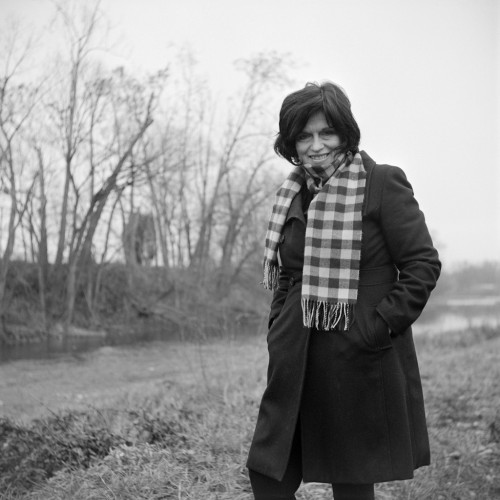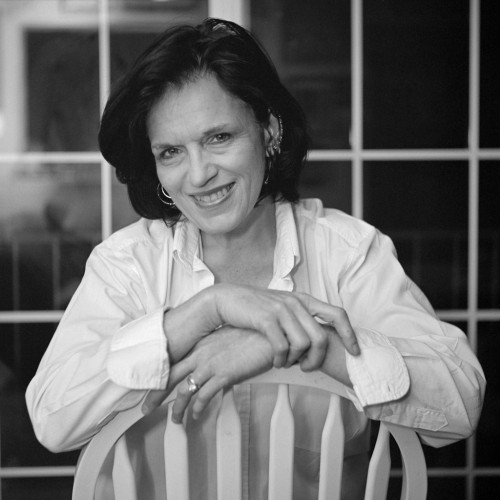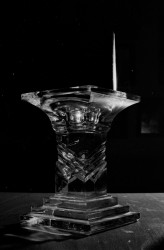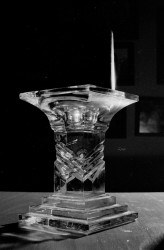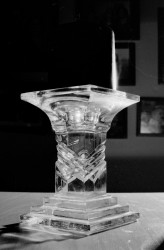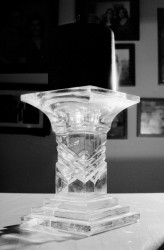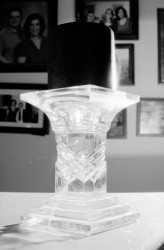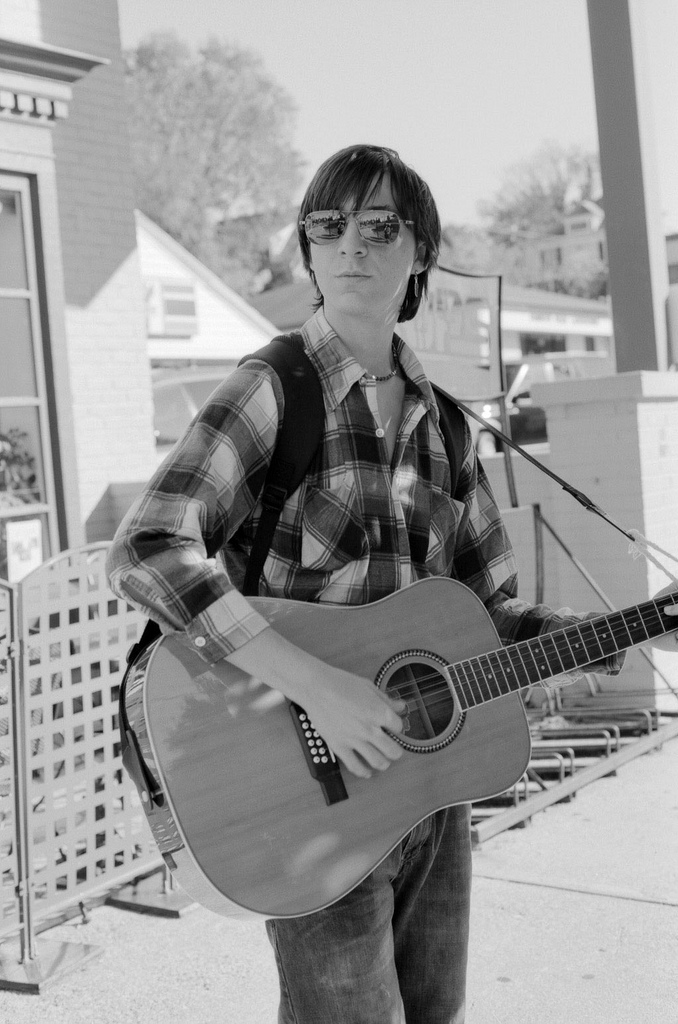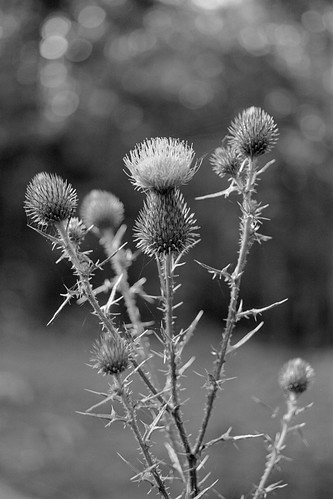
This is one of my favorite recent photos, taken underneath the Blue Ridge Parkway just east of Roanoke. The fact that it exists at all is little short of a miracle.
I was out with several other local shooters, exploring the hiking trails in the area. One trail goes down to the Roanoke River, the other runs beneath a very tall road bridge which carries the BRP over the river. While everyone else was down by the river’s edge, I decided to try for something different and wandered off the trail under the bridge. My plan was to find a view looking over the river. What I found was heavy undergrowth leading to a sheer drop into the river; certainly nothing I could get a pleasing vantage point from.
Fortunately, as I made my way back toward the trail I did notice some extremely tall thistles and other interesting weeds among the undergrowth and set up to shoot a close-up of this one. Between the slow film (Ilford’s Pan F+, an ISO 50 film), aperture needed for appropriate depth of field and the shady location, I was down around 1/8th of a second.
So the camera was stable enough perched on its tripod, but the 5′ tall thistle was…well…oscillating. Every time a breeze blew up, it would swing back and forth like an upside-down pendulum. Muttered attempts to convince the relevant authorities to knock it off with the wind already went unanswered.
So I decided to frame the thistle so that it would be where I needed it to be as it hit the apex of its swing, in that brief moment of no motion. Stared into the viewfinder, waited for the stars and planets to align, and hit the shutter release at what I hoped was the moment.
Then moved on, because I didn’t have all day and I didn’t have a lot of film left on me. Either I got it or I didn’t, and I wouldn’t know until I saw the negative.
One of the neat things about shooting film is how you get surprised, at least when the surprise is pleasant (more usually, it isn’t). I fully expected a badly-framed, blurry shot of the thistle, perhaps even with the faint hint of an imaginary grin on its imaginary face as it hustled out of my ruined photo, mocking my meager attempt to capture it; but no, what I got was the above, sharp enough that the fine threads of a spider’s web are visible draped around it. I didn’t even notice those until I saw the negative! It’ll make a lovely print, for sure.
